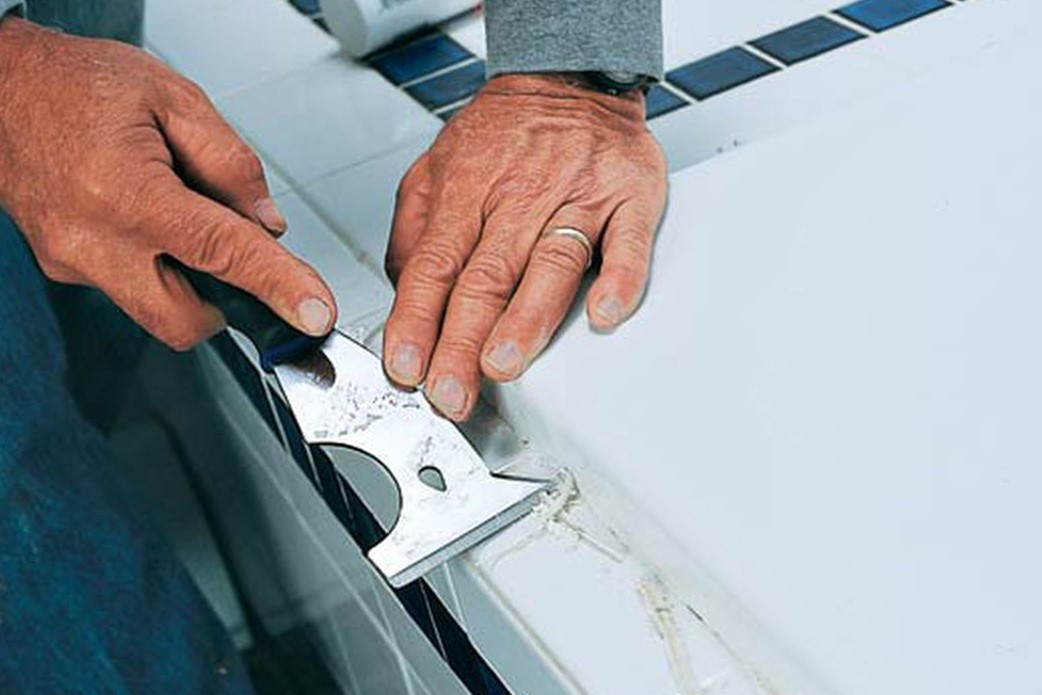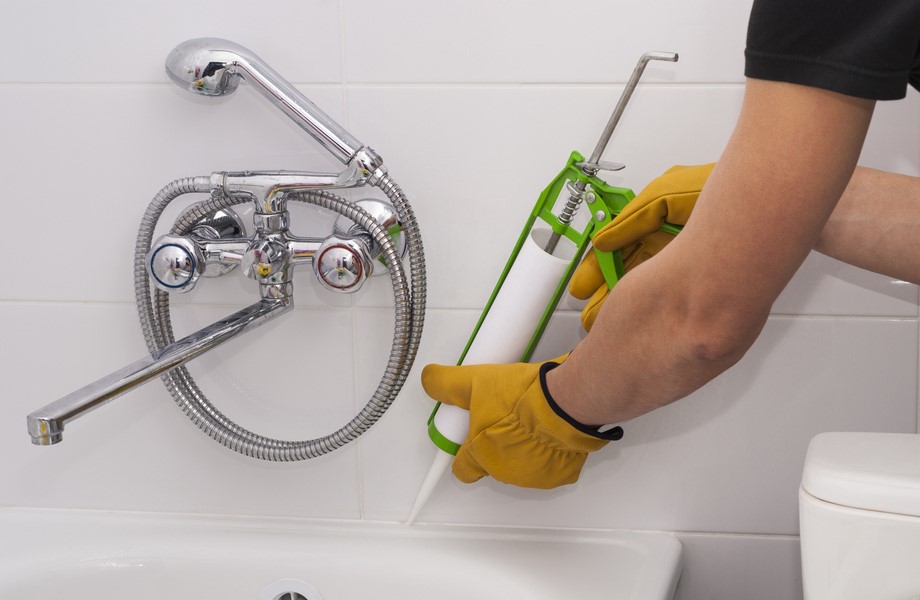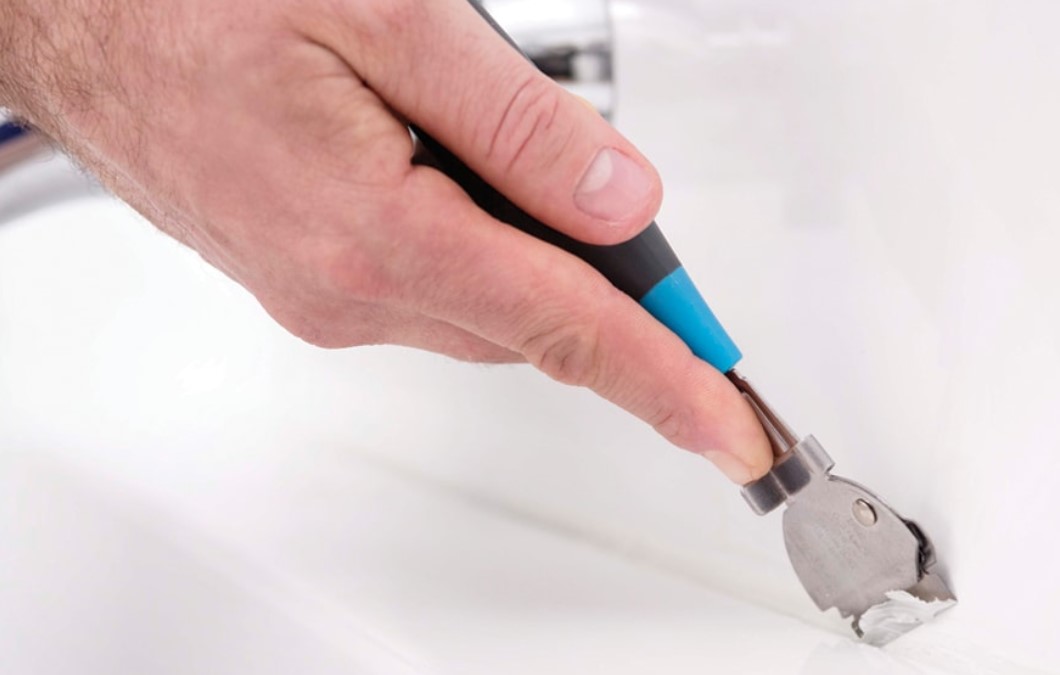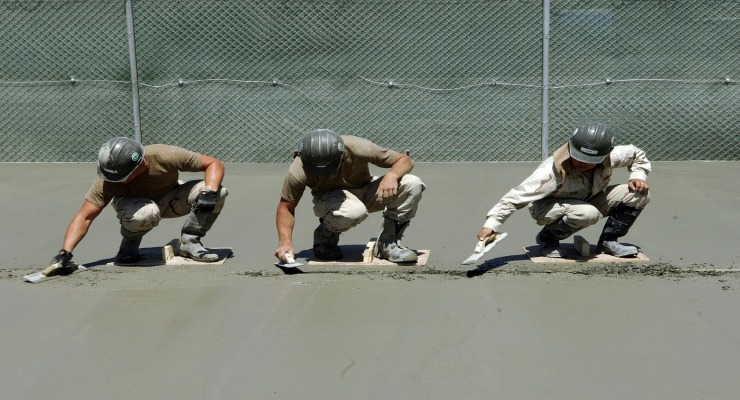How to Remove Silicone? 3 Effective Methods for Silicone Removal
Have you just installed a shower cabin and now there are silicone stains on the tiles? Or perhaps you were securing a mirror or windows and some silicone remains on the glass? Such “decorations” are not very aesthetically pleasing. Sometimes, silicone sealant also needs to be removed for a fresh layer. After a few years the material becomes loose, some cavities, dirt and mould appear. It’s a sign that the time for removal has come. How to remove silicone? We have prepared 3 most effective methods which will work in each of the mentioned situations.

Choosing a silicone remover: the most important issues
The method of silicone removal depends on the type of the surface covered by the sealant. How to remove silicone from tiles or wood? Choosing the best way to remove silicone is an important issue - you don’t want to accidentally destroy the surface.
You need to make sure that the surface is clean, especially if you’re removing silicone sealant in a tiled bathroom. Take all the objects standing on the tub or the shower base and wash the tiles and sealings carefully. Use either a special cream cleaner or an ordinary detergent such as dish soap. Make sure to remove soap stains - this way removing silicone sealant will be easier and more effective.

A chemical silicone remover - is it an effective method?
A chemical silicone remover which can be bought in typical hardware shops, is one of the most popular methods. Such products contain strong solvents that quickly dissolve silicone sealants and allow for its easy removal.
How to use a chemical silicone remover?
- Protect your hands with rubber gloves. It’s very important, as a typical chemical sealant remover is caustic.
- If the surface around the sealant is delicate, secure it. You might use, for instance, a painter’s tape.
- Start removing silicone sealant mechanically. You can use either a special silicone removal tool or a small knife. Be careful - do not scratch the surface.
- Spread the silicone cleaner onto the remains of the sealant. Usually, a small brush is included in the silicone remover kit, to make the process easier. Wait for the recommended amount of time.
- Scoop the softened silicone using a small scraper or the silicone removal tool. Afterwards, wash the surface with water and detergent.
A surface prepared like this is ready to put a fresh layer of sealant on. There are many products available on the market, but be careful. Some surfaces are easy to damage even when using very mild chemicals.
A too aggressive silicone remover might tarnish the surface. In case of such situations, there is nothing much you can do. For this reason, make sure to read the label of each product you are about to use, to make sure that it is suitable for your surface.
The unpleasant smell is definitely a large disadvantage of using a chemical sealant remover. Products like this typically contain acetone. After removing the silicone sealant with this method, make sure to ventilate the room. In case you or someone living with you are particularly sensitive to such acrid smells, consider removing the silicone sealant with a more eco-friendly method.

An eco-friendly silicone remover. How to remove silicone sealant without chemicals?
Are you anxious that a strong chemical sealant remover might be too strong? Or perhaps you just want to try a less expensive method? We have a fantastic solution for you. It is possible to remove a silicone sealant in a gentle way - which does not mean it is less effective.
All you need is:
- A small knife or a razor - you can use a box cutter or a special silicone removal tool.
- Any type of grease - anything will do: baby oil, greasy lotion, vegetable oil.
After cleaning the surface, make a cut on one side of the sealant. Pull the blade along its length - do it slowly, making sure not to damage the surface! Do not cut through the sealant. You only need to loosen the silicone. Repeat that for each corner with the sealant. Then just grab an ending and gently pull. The sealant should come off in almost one piece.
How to remove silicone sealant that broke off and stayed on the surface?
Spread the grease on any residues of the sealant. Wait for some time until the silicone absorbs the oil, and then scrape it off with a dry sponge or a piece of cloth. Because this method makes the surface very oily, make sure to degrease it before putting a fresh layer of sealant. To do this, use a detergent.

How to remove silicone from clothes, wood, hands? Use temperature
Unfortunately, methods like store-bought silicone remover or knife and oil are not always suitable. In case of stained clothes, skin and wood, they might be harmful.
So, how to remove silicone in this situation? Temperature might be a good help. In case of wood and clothes, silicone should be removed after it solidifies.
- How to remove silicone from clothing? Under no circumstances attempt to wipe off fresh silicone - it will only get absorbed by the fibres, making the stain impossible to remove. Instead, carefully remove the product using a knife or a spatula. After the silicone stiffens, put some ice over it - small stains will be easy to crumble up. Do do this, you can use an ink eraser, but keep in mind that a few fibers might get scraped off along with the silicone. Lastly, wash the clothing to remove any residues.
- Removing silicone from wood might be a problematic issue. Grease and other chemicals cannot be used in this case, as they might stain the surface and damage the wood. The only method for silicone removal from wood is putting ice on it, similar as with clothes. Then try to crumble it up. You can use a knife but be careful not to scratch the surface.
- Removing silicone from skin is quite easy when it’s still wet - just wipe it off with a cloth or a paper towel. It might be more difficult after it stiffens. How to remove silicone which has hardened on skin? A hairdryer might be a useful tool in this case. Direct the warm air onto the stain and wait until it softens. Then wipe the silicone off and wash the skin with soap.
Removing silicone is not as difficult as it might seem. Just pick the right method to the surface from which you remove silicone. Pay special attention not to damage the surface around the sealant. If you catch yourself wondering how to remove silicone in the future, just use one of the methods presented above.
FAQ
How to remove silicone from bath?
There are several methods for removing silicone sealant from a tiled bath. Using a chemical silicone remover is the easiest one, however it might be too aggressive because of the harsh solvents it contains. Instead, you might try to remove the silicone mechanically, using a knife or a razor.
How to remove sealant from tiles?
Removing silicone sealant from tiles is not difficult - just choose one of the methods. Use a chemical silicone remover, oil or hot air. Be careful when using a store-bought sealant remover - a strong chemical could discolor the surface. Never use a knife or other sharp tool.
How to remove sealant from shower?
Removing silicone sealant from shower is easy - all you need is a small knife. Cut through the seal to loosen it. You can use either a special silicone remover which will soften the sealant, or try to remove it mechanically. Do not use chemicals not labeled as sealant remover - there's a risk of reaction with the fresh silicone.
How to remove black mould from silicone sealant?
A sealant covered with mould should be removed as soon as possible - it poses a serious threat to health. Use a silicone remover or other method to get rid of the caulk - remember to wear gloves! Before applying a fresh layer of silicone, clean the surface with an anti-fungal agent.


